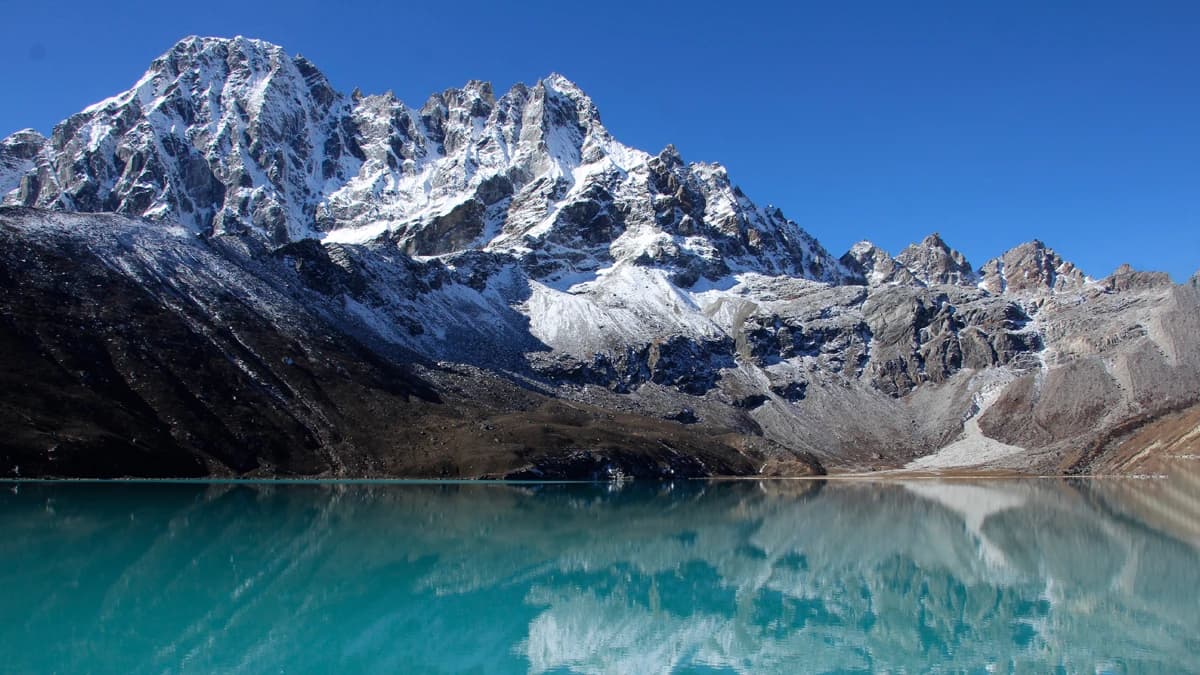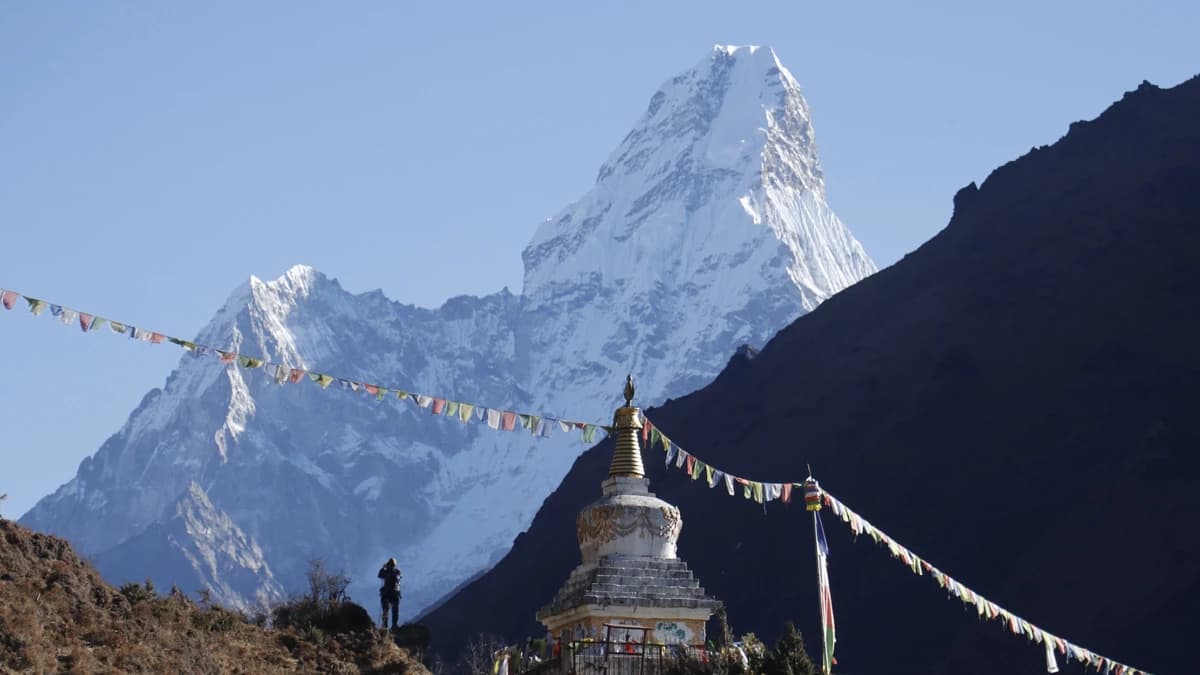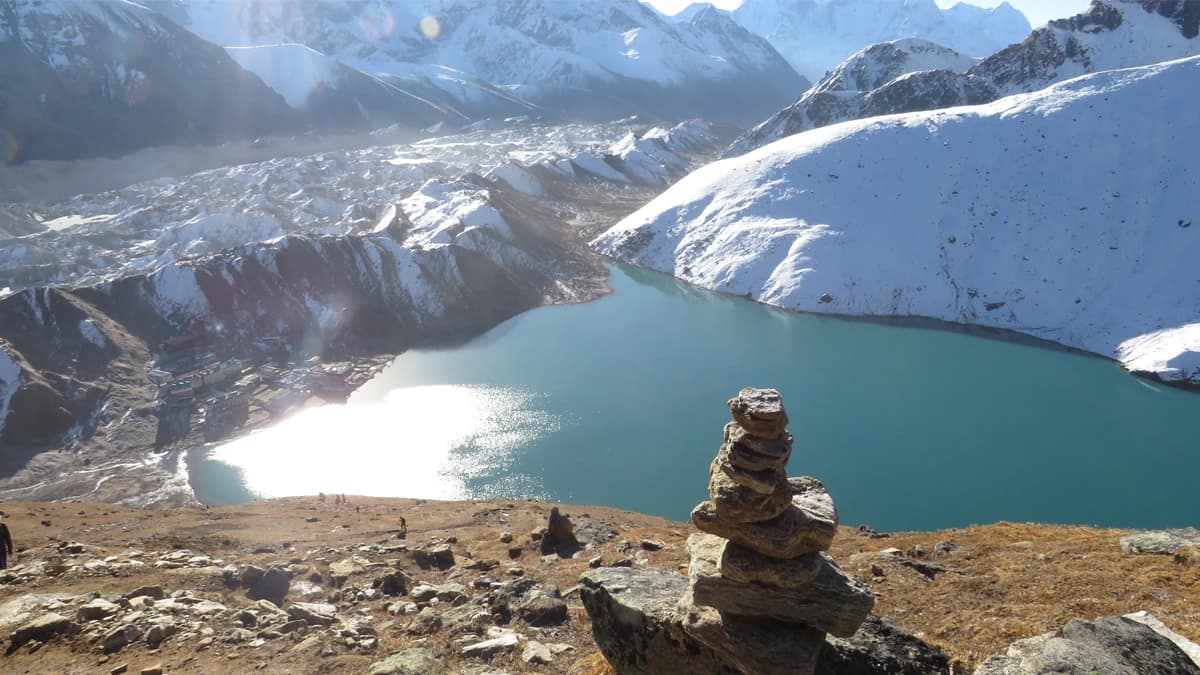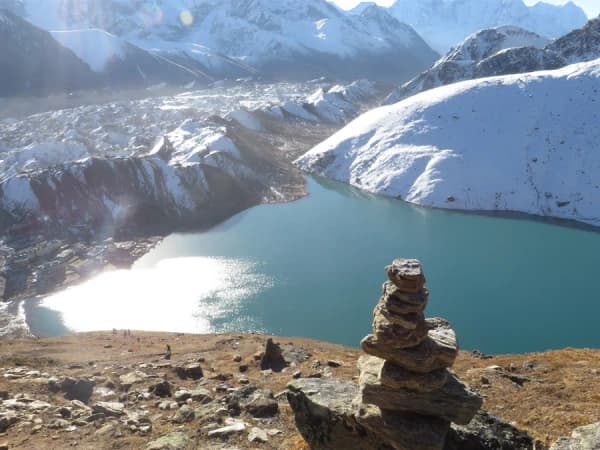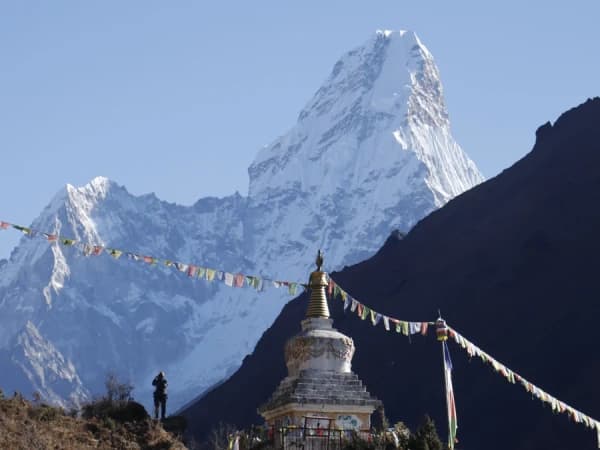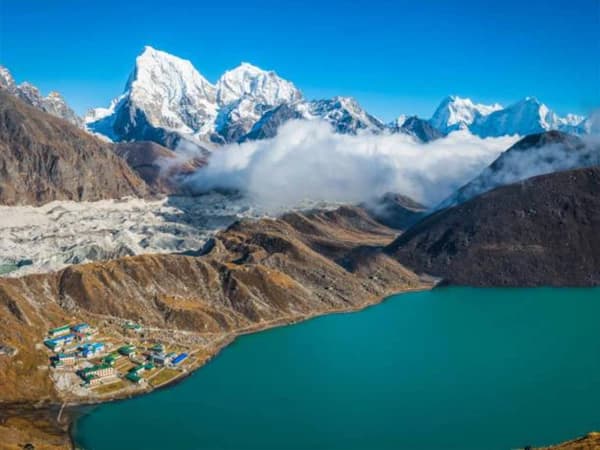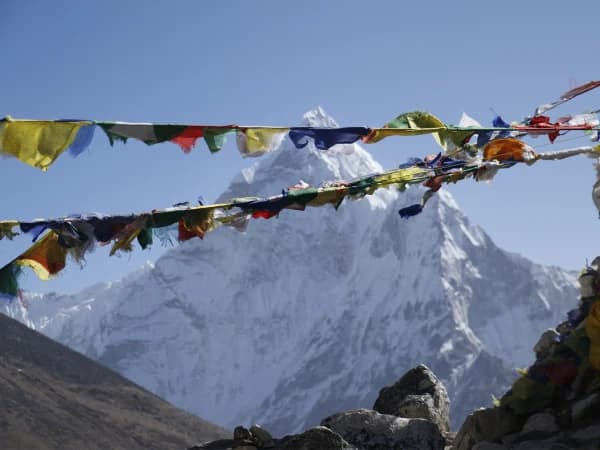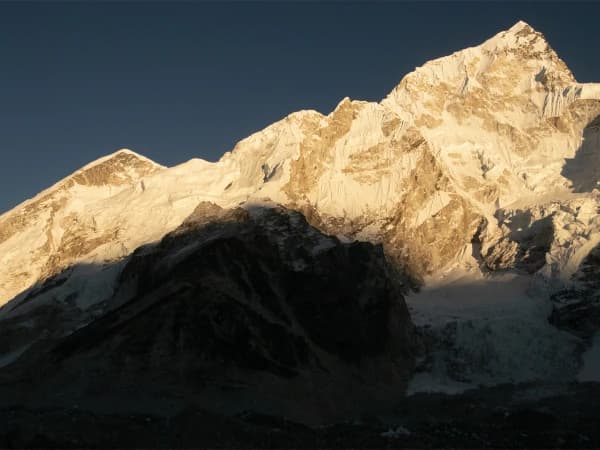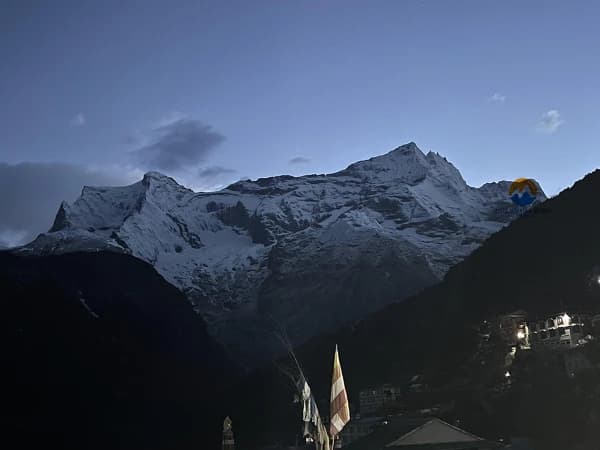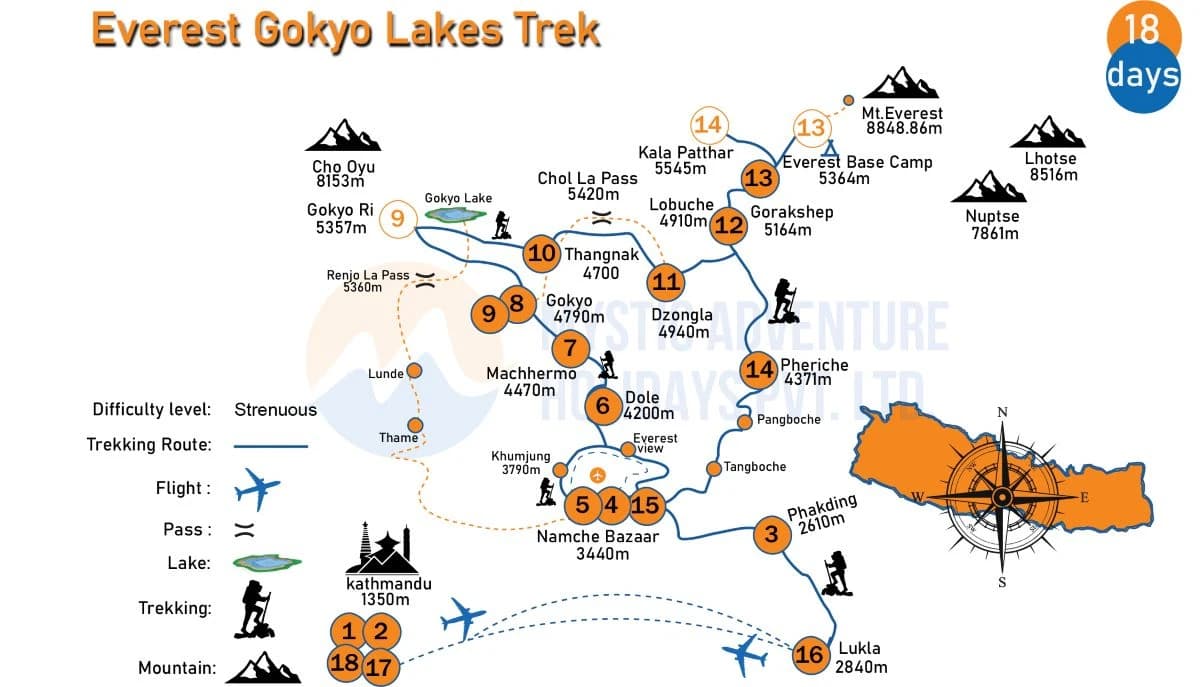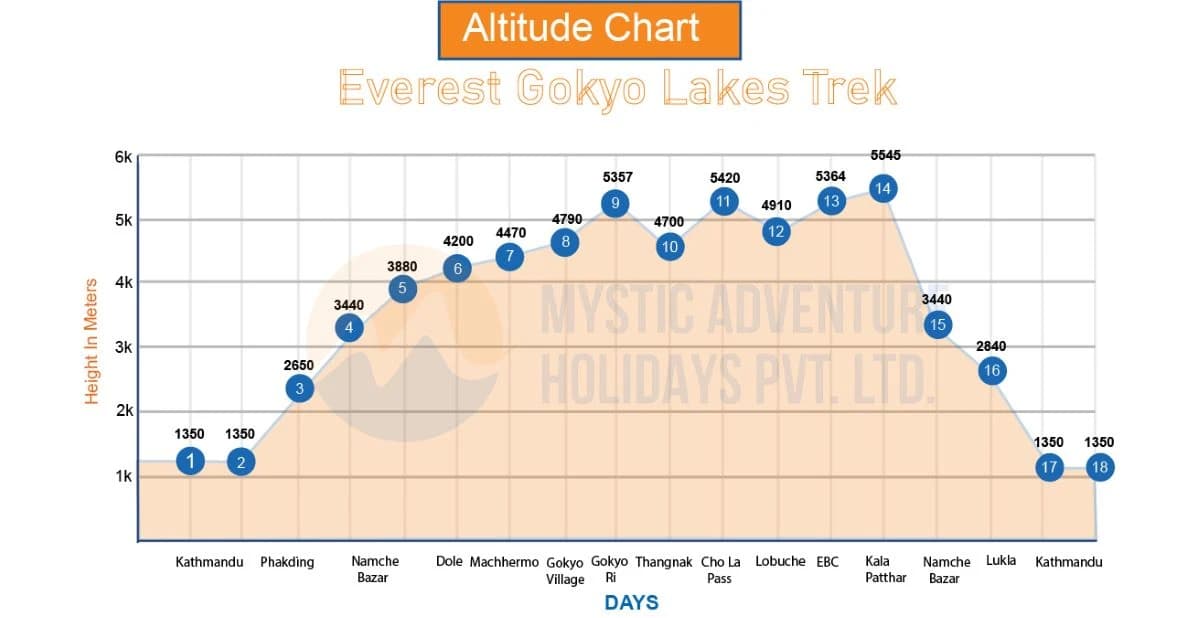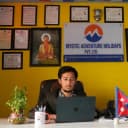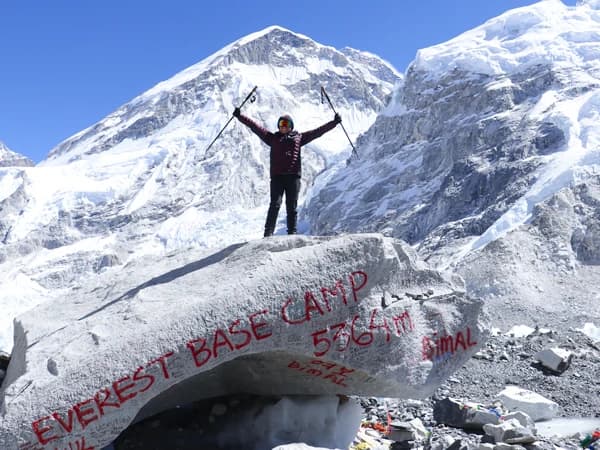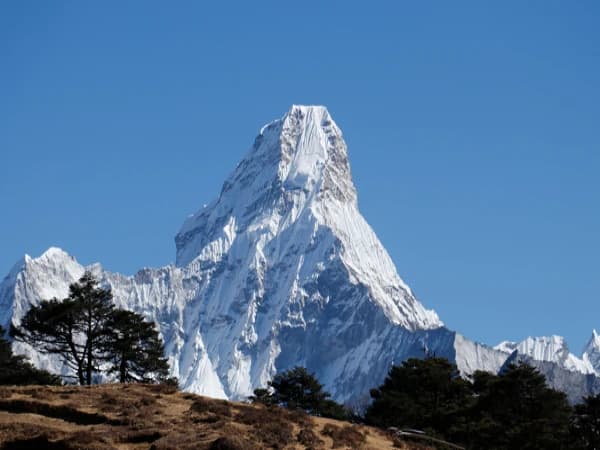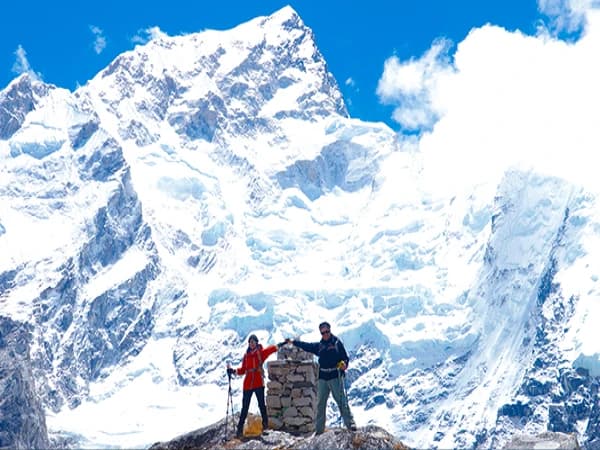Everest Base Camp Trek via Gokyo Lake is a thrilling journey through challenging places of the Everest region to the base camp of the world’s highest peak, mount everest. This trek offers more diverse landscapes and a unique trekking experience.
General Highlights of trek
- Exploring the UNESCO world heritage sites in Kathmandu, including Swyambhunath Temple, Bouddhanath Temple, Kathmandu Durbar Square, and so on.
- Scenic flight to the world’s most dangerous airport in the world, lukla airport.
- Trekking through the diverse landscapes, from lush green valleys to stark high-altitude terrains.
- Panoramic views of the prominent peaks, including Mount Everest, Lhotse, and Cho Oyu.
- Enjoying the spectacular views of the striking turquoise waters of Gokyo Lakes.
- Visit the machhermo village, popular as the habitat of the Yeti (abominable snowman).
- Crossing the challenging high mountain pass, Cho La Pass (5420 m).
- Immersing in the vibrant Sherpa culture, passing through traditional villages like namche bazaar and Tengboche.
- Experience the local hospitality and visit the ancient monasteries like tengboche monastery.
- Trekking to the base camp of the world’s tallest mountain, Everest.
- Witnessing the Khumbu icefall during the trekking.
- Trek to the highest altitude level of the trek, Kala Patthar (5555 m) for the best sunrise views over Mount Everest.
Brief Overview of 2026 Trek
The EBC trek via gokyo Lakes itinerary starts with the exploration of the unesco world heritage sites, including Pashupatinath Temple, Swyambhunath Temple, Bouddhanath Temple, Kathmandu Durbar Square, etc. in Kathmandu. This part of the exploration gives you a glimpse of ancient nepal.
During this trek, you will cross the challenging high mountain pass, lush green valleys, terrains, Cho La Pas, and visit the stunning Gokyo Ri and Gokyo Lakes. These are the spots from where you can see some of the best views of the snowcapped peaks like Mount Everest, Lhotse, and Cho Oyu.
This trekking journey to EBC takes you through the culturally rich villages like Namche Bazaar, Tengboche, Phakding, etc. that offer a glimpse of the Sherpa culture and traditions. During the visits, you will get to explore the village, monasteries, and other ancient monuments.
The last viewpoint in the Everest base camp via Gokyo Lakes itinerary is Kala Patthar View Point (5,550 m), which is also the highest altitude level reached during the trek. This place will give you the best views of Mount Everest, which is also a small heaven for nature enthusiasts and mountain lovers.
Major Highlights of 2026 trek
-
Gokyo Village: Settlement, Gokyo lakes(4,750 meters) and Gokyo ri ( 5,357 meters)
Gokyo village is an important destination in the Everest Base Camp trek via Gokyo Lake Itinerary. The trekker heading towards the base camp of the Everest peak via Gokyo Lakes spent a night in this village. The special attractions of the village are Gokyo Lake and Gokyo Ri. There are other lakes than gokyo lakes like Thonak Lake, Gyazumpa Lake, Tanjung Lake, Ngojumba Lake, Longbanga Lake, and so on.
You can enjoy the views of the turquoise water along with snowcapped peaks like Mount Everest, Lhotse, Makalu, and Cho Oyu from the nearby viewpoints.
-
Cho La Pass (5,420 meters)
Cho La Pass is a mountain pass located in the Solukhumbu district of Nepal. This pass is an important part of the Everest base camp trek via Gokyo Lake and Cho La Pass. From the pass, you can enjoy the views of major peaks such as Lhotse, Ama Dablam, and Cho Oyu. Besides it, it is also an important pass for those trekkers who are undertaking the Three Passes trek.
-
Gorak Shep (5,164 meters)
Gorak Shep is a popular destination for the trekkers going for the Everest Base Camp Trek and the Everest Gokyo Lakes Trek. The settlement was base camp for those attempting to summit Mount Everest. However, it was relocated closer to the mountain due to glacier movements. Since then, Gorakshep has been an important stop for trekkers before heading to the Everest Base Camp on the everest base camp trekking trail.
-
Everest Base Camp (5,364 meters)
The Everest base camp is the main destination of the whole trek. From the base camp, you can see the prominent peaks like Mount Everest, Lhotse, Makalu, and Cho Oyu, all peaks above 8000 meters. The weather conditions around the base camp are unpredictable. The average temperature can range from -15°C to 10°C. Also, there is a risk of avalanches. However, the south base camp has been an important spot for the trekkers to spend a night before hiking to Kala Patthar View Point.
-
Kala Patthar view point (5,555 meters)
Kala Patthar view point is the important view point of the trek. It is located on the southern ridge of Pumori in the Himalayas, above Gorakshep. From the viewpoint, you can see the close views of Mount Everest's triangular massif. It is the highest altitude, that you will reach as per EBC trekking via Gokyo Lakes itinerary. There are no teahouses or lodges. You have to return to base camp for a night stay.
Why us for the Everest Base Camp Via Gokyo Lakes Trek 2026?
3S: Safety, Success, and Satisfaction
Booking an Everest Base Camp via Gokyo Lakes Trek package with Mystic Adventure Holidays offers superior service and benefits. Here's why:
- Client Safety: Our trips are organized with the utmost safety in mind.
- Best Price Guarantee: Ensuring you get the best value.
- Free Transfers: Complimentary airport-to-hotel and return transfers in a private vehicle.
- Expert Guides: Trained, government-licensed local guides with extensive route knowledge.
- Support for Locals: Helping local communities earn a living through tourism.
- Health Monitoring: Oximeters to monitor oxygen levels during high-altitude EBC treks.
- Medical Preparedness: Guides equipped with medical kits to handle any situations that may arise.
- Essential Gear: Arrangements for sleeping bags and down jackets.
- Free Storage: Secure storage at our office for extra luggage during your tour.
- Convenience: Duffel bags for transferring items to be carried during the journey.
- Porter Service: A free porter to help carry your heavy bags.

